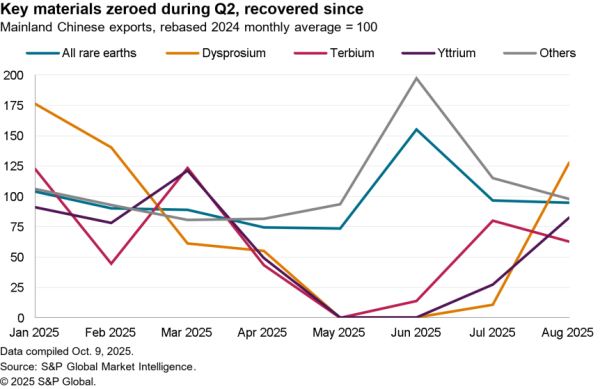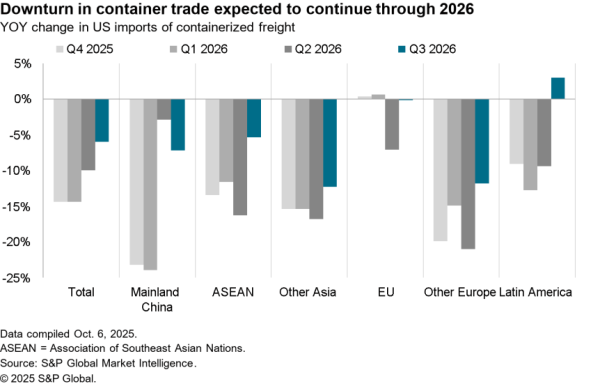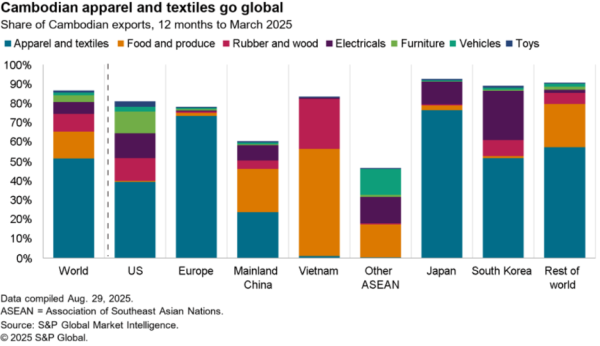Evergreen Marine’s container vessel Ever Given has run aground in the southerly section of the Suez Canal, blocking traffic in both directions according to FleetMon. The grounding occurred at 0600 UTC on March 23 and was still ongoing as of 0600 UTC on March 25 according to VesselFinder data. Should lightering (removing fuel, ballast and potentially even cargo) become necessary the delay could take several days more.
The Authority has rerouted some vessels to an older routing with lower capacity, Reuters reports. Though moving the vessel could take at least another two days according to The Independent.
Around 50 vessels per day use the Suez Canal, Panjiva’s analysis of official data shows. Container ships accounted for 52.7% of the tonnage in 2019 transiting the canal including shipments from Asia to Europe and the U.S. east coast as well as vice-versa.
The Canal has had to contend with ever larger container vessels using the average tonnage per container ship reaching 119,000 tons in the 12 months to Feb. 28, 2020 (the most recent data published by the canal) from 93,500 in 2015.

Source: Panjiva
Other container vessels currently also in the canal include the Ever Excel and Ever Globe as well as vessels owned by Maersk, MSC, ONE and Yang Ming among others among others according to VesselFinder data. Groundings are relatively uncommon though there have been notable examples including CMA CGM’s Missouri which grounded in the Suez Canal in October 2020, Container News reported.
Groundings are far from the only challenge to beset major shipping vessels. Hyundai Glovis’s Golden Ray capsized offshore Brunswick after a fire, U.S. as discussed in Panjiva’s November 2019 research. The vessel has had to be abandoned and is still in the process of being dismantled. There was also a spate of container vessel fires in early 2019 including Hapag-Lloyd’s Yantian Express and MSC’s Zoe.
The most recent challenge has been a series of losses-at-sea during the winter storm season in the Pacific that have led at least five ultra-large container vessels to lose containers. The largest loss was on the ONE Apus with over 1,800 containers overboard while Maersk’s Essen and Eindhoven vessels have both lost or suffered damage to 750 and 325 containers respectively but have now arrived at Los Angeles.
Even consignees whose cargo was not lost overboard suffer challenges from freight delays in the order of weeks as vessels are rerouted – to Mexico in the case of the Maersk Essen and to Japan in the case of the ONE Apus and Maersk Eindhoven. Indeed, in the case of the ONE Apus the initial disaster occured on Dec. 1 with final arrival into Long Beach due on March 30.
Panjiva’s data shows that 13,410 TEUs have been unloaded from the Maersk Essen since its arrival in Los Angeles. Among the non-logistics firms the largest consignees identified – which will have suffered at least a month of delays – were sports apparel makers Puma and Adidas with 222 TEUs and 87 TEUs shipped respectively while fitness equipment maker Icon Fitness received 212 TEUs and home and garden brand manufacturer Spectrum Brands with 170 TEUs.

Source: Panjiva




